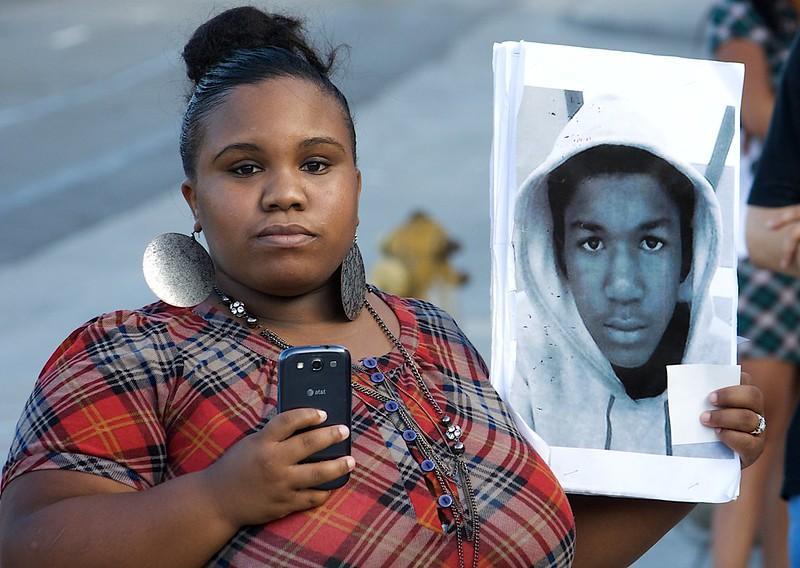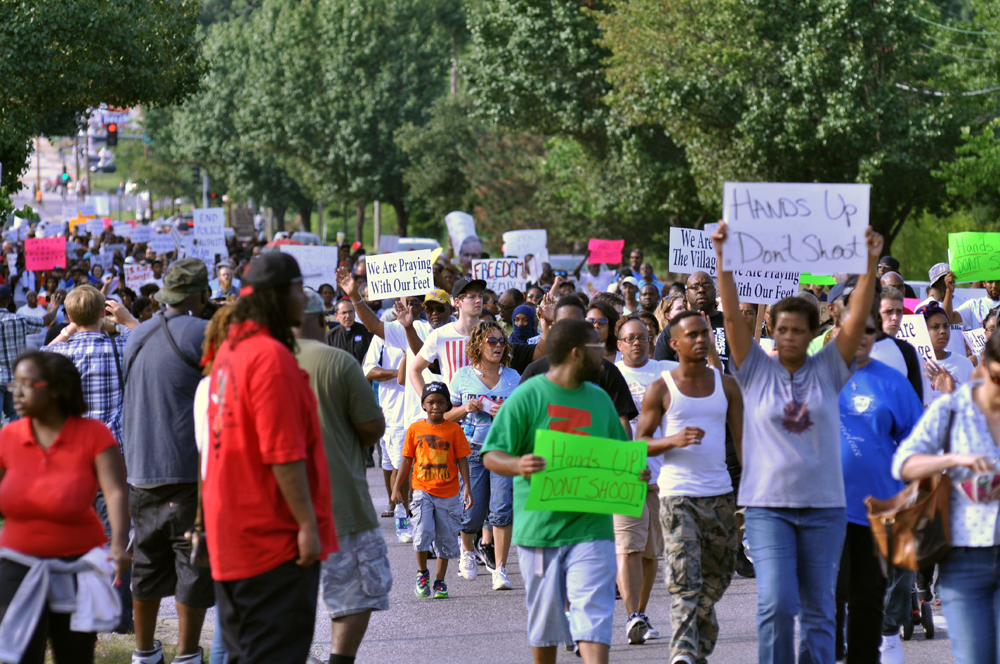9.4 Social Movements, Social Media, and Social Justice
Nora Karena
https://www.youtube.com/watch?v=tbicAmaXYtM&t=1s
We don’t deserve to be killed with impunity. We need to love ourselves and fight for a world where Black lives matter. Black people, I love you. I love us. We matter. Our lives matter.
– Alicia Garza, Facebook Post July 13, 2013.
Declaration: black bodies will no longer be sacrificed for the rest of the world’s enlightenment. I am done. I am so done. Trayvon you are loved infinitely. #blacklivesmatter.
– Patrisse Cullors, Facebook comment, posted July 13th, 2013.
When mass protests erupted in the wake of the acquittal of the person who killed 17-year-old Trayvon Martin, the two impassioned Facebook posts that launched #BlackLivesMatter were called “love letters that launched a movement” (Jennings 2020). BLM is an example of the power of social media to create and shape social movements. Here we will look at how social media was engaged at each of the four stages described in the previous section, emergence, coalescence, institutionalization, and decline.
Emergence

Hashtag activism is the act of building up public support via social media for a cause, using a hashtag (#) (Pratim 2018:252). When Patrisse Cullors answered Alicia Garza’s declaration with #BlackLivesMatter the message resonated deeply as part of an overwhelming outpouring of collective grief and anger on social media. Between July and December of 2013, the hashtag was used 5,106 times. By 2016 Twitter reported that #BlackLivesMatter was the third most popular hashtag in the platform’s 10-year history, with nearly 1,200,000 tweets (Sichynsky 2016).
Patrisse Cullors and Aliza Garza were already seasoned and well-networked organizers with experience using social media, as was Ayo Tometi, who responded to the posts with plans to purchase the domain blacklivesmatter.com. Together, they deftly used social media to amplify the voices of over-policed, under-resourced communities of Black people, as they declared to one another, “We matter.” and to Americans, “Stop killing us.” Ayo Tometi, an organizer with a background in communications, responded by purchasing www.blacklivesmatter.com, where they linked to organizing resources and articulated the following principles:
- We are expansive. We are a collective of liberators who believe in an inclusive and spacious movement. We also believe that in order to win and bring as many people with us along the way, we must move beyond the narrow nationalism that is all too prevalent in Black communities. We must ensure we are building a movement that brings all of us to the front.
- We affirm the lives of Black queer and trans folks, disabled folks, undocumented folks, folks with records, women, and all Black lives along the gender spectrum. Our network centers on those who have been marginalized within Black liberation movements.
- We are working for a world where Black lives are no longer systematically targeted for demise.
- We affirm our humanity, our contributions to this society, and our resilience in the face of deadly oppression.
- The call for Black lives to matter is a rallying cry for ALL Black lives striving for liberation (Birdsong 2016).
Coalescence
At the next stage, the coalescence stage, social media is also transformative. Over the next year, these seasoned organizers skillfully leveraged social media to build legitimacy for their claims.

The most popular hashtag on Twitter in its first decade was #Ferguson, with 1.7 million tweets between 2014 and 2016 (Anderson 2016). Ferguson, Missouri, is where Black Lives Matter coalesced as a global movement. When Ferguson, Missouri, erupted in rage and grief over the killing of Michael Brown, Patrisse Cullors and Darnell L. Moore used social media to call for a “Freedom Ride” to Ferguson. Inspired by the activists who mobilized for Black lives during the Civil Rights Era, this Freedom Ride would focus national attention on this most recent example of state-sanctioned violence against Black lives. The plan successfully mobilized the #BlackLivesMatter Social network to gather in St. Louis for three days of solidarity with local organizers, including the Organization for Black Struggle (OBS) and Missourians Organizing for Reform and Empowerment (MORE). Their goal was to build a sustainable coalition around the following demands:
- Justice for the family of Michael Brown and other victims of law enforcement and vigilante violence
- The demilitarization of law enforcement
- National investment in jobs, housing, and schools in Black communities (Mosendz 2014).
The use of #BlackLivesMatter was so prevalent during the Ferguson protests that organizers asked Twitter users to stop using it unless directly related to the actual activities and information about the protests.
Since Ferguson, #BlackLivesMatter has been the go-to search term for antiracist organizing. On Dec. 4, 2014, after a New York grand jury declined to indict police officers in the death of Eric Garner, #BlackLivesMatter appeared 189,210 times—the most it was ever used in a single day. On the first anniversary of Garners’ death, the hashtag appeared more than 228,000 times in two days. When Senator Bernie Sanders defended the Black Lives Matter movement, the hashtag appeared more than 127,000 times on Twitter the following day as many users voiced support for Sanders (Anderson 2016).
Social media users report changing their minds about Black Lives Matter (BLM) and issues related to race and policing because of their interactions on social media platforms. Between Ferguson and Minneapolis, the world had a conversation on social media about what we mean when we say Black Lives Matter.
Social media is credited with helping #BLM to break through decades of color-blind racism and helped people feel OK saying that Black Lives Matter (Jennings 2020). Between 2014 and 2020, police killed at least 7680 people in the United States. Though only 12 % of the population is Black, 25% of the dead people are Black (Haddad 2021). Every time another Black life ended, the message got out again. More people engaged in the emerging network. By the time George Floyd’s murder went viral, a match was struck. Around the world, seven years of organizing exploded into the streets.
Institutionalization
Social media can also accelerate a movement toward the institutionalization stage. In some cases, like #BlackLivesMatter, one or more formal organizations might exist alongside the hashtag or general sentiment.
BLM originally operated with a decentralized leadership structure and relied on fiscal sponsorship from a larger non-profit for financial oversight. The stated intention was always to distribute funds to local chapters that were well-positioned to respond to the needs of local communities. This infrastructure was temporarily overwhelmed after receiving 90 million dollars in donations during 2020. Social media coverage during this period included accusations of misuse and misappropriation of funds, and the organization came under scrutiny for a lack of transparency.
The Black Lives Matter Global Network Foundation responded to these growing pains by reorganizing and creating a Transparency Center on the website with updates on a new board of directors and links to tax filings. Their 2022 disclosures list 42 million dollars in assets and reports distributing more than 26 million dollars in grants to local BLM chapters and directly to families of victims of police violence in 2021 (Morrison 2022).
Decline
Decline simply refers to the winding down of an effort. It doesn’t necessarily mean that a movement is not successful. On the contrary, a period of decline naturally follows successful efforts. It is also important to note that the status quo is not easily changed, and successful social movements also face periods in which their gains are challenged and tested. That’s why it is important to view individual interconnected social movements within a larger historical context. The Civil Rights Movement of the mid-20th century was undoubtedly one of the most successful social movements in history, yet in spite of the notable gains, the movement eventually lost momentum when the most visible leadership and supporters, including Malcolm X. Dr. Martin Luther King Jr. and Bobby Kennedy, were assassinated, while more radical organizers, like Angela Davis, Fred Hampton, and Assata Shakur were criminalized. You met Angela Davis in Chapter 1, but please click if you’d like to know more about Fred Hampton and Assata Shakur,
Morris observes that, “the decentralized leadership structure of the BLM movement and other contemporary social movements seems to have provided a bulwark against this sort of decapitation (2021).” When Garza, Tomati, and Cullors were targeted with misinformation and disinformation, the movement itself did not falter. Distributed leadership allowed the movement to thrive while the original organizers continued to develop new projects in their quest for a world that values Black lives.
As of 2023, the original website is now maintained by the Black Lives Matter Global Network Foundation, with current updates about the status of their ongoing work for racial justice and liberation. They also provide a link where people can report disinformation related to BLM. #BlackLivesMatter still trends on social media to signify racial injustice. While the Black Lives Matter movement may have passed, it leaves a lasting legacy that continues to shape anti-incarceration and anti-violence social justice organizing around the county.
Licenses and Attributions for Social Movements, Social Media, and Social Justice
Open Content, Original
“Social Movements, Social Media, and Social Justice” by Nora Karena is licensed under CC BY 4.0.
Open Content, Shared Previously
Figure 9.15. “An Interview with the Founders of Black Lives Matter” by TED is licensed under CC BY-NC-ND 4.0.
Figure 9.16. “Rally for Trayvon Martin 24” by Ryan Vaarsi is licensed under CC BY 2.0.
Figure 9.17. “Protestors demonstrating down West Florissant Ave.” by Loavesofbread is licensed under CC-BY-SA 4.0
purposeful, organized groups that strive to work toward a common social goal
a hashtag that first went viral in 2013 in response to the acquittal of Trayvon Martin’s murderer. In the decade following its introduction, #BlackLivesMatter became a popular organizing tool on social media.
the ability of an actor to sway the actions of another actor or actors, even against resistance
areas with relatively high poverty rates that lack robust economic infrastructure. While the term often refers to cities and suburbs with populations of over 250,000 people, many rural communities are also under-resourced (adapted from Eberhardt, Wial, and Yee 2020:5).
a person who does not conform to norms about sexuality and gender (particularly the ones that say that being straight is the human default and that gender and sexuality are hardwired, binary, and fixed rather than socially constructed, infinite, and fluid).
anyone residing in any given country without legal documentation. It includes people who entered the U.S. without inspection and proper permission from the government, and those who entered with a legal visa that is no longer valid.
a social expression of a person’s sexual identity that influences the status, roles, and norms of their behavior.
a group of people who live in a defined geographic area, who interact with one another, and who share a common culture
a socially constructed category with political, social, and cultural consequences, based on incorrect distinctions of physical difference
a marriage of racist policies and racist ideas that produces and normalizes racial inequities
a response to racism that changes social systems to reduce racial inequities and address the social and interpersonal conditions caused by racial inequities.
full and equal participation of of all groups in a society that is mutually shaped to meet their needs

